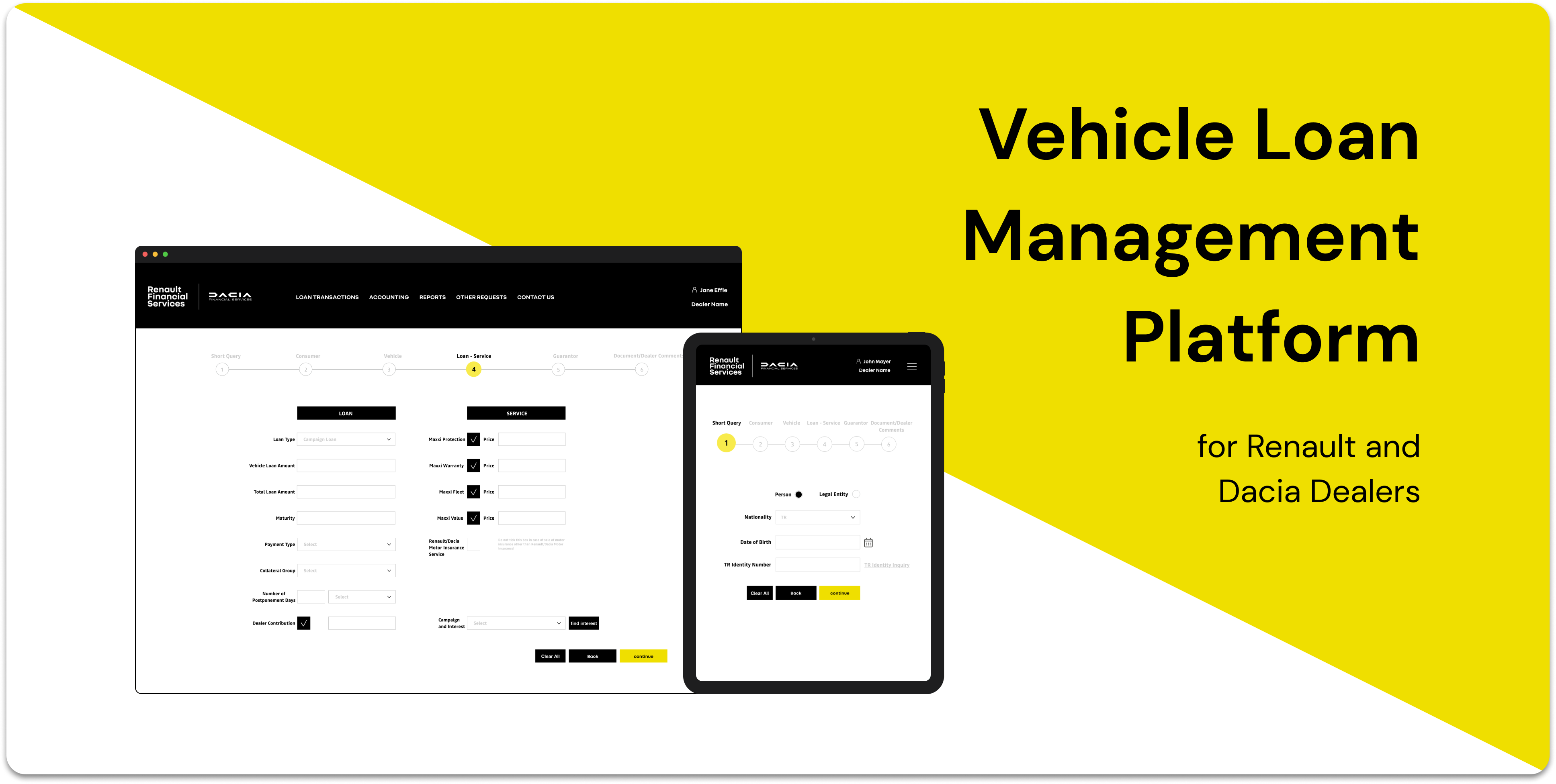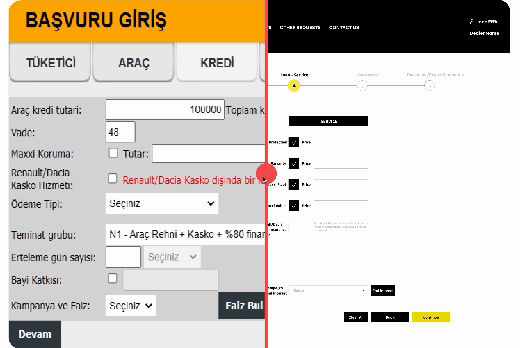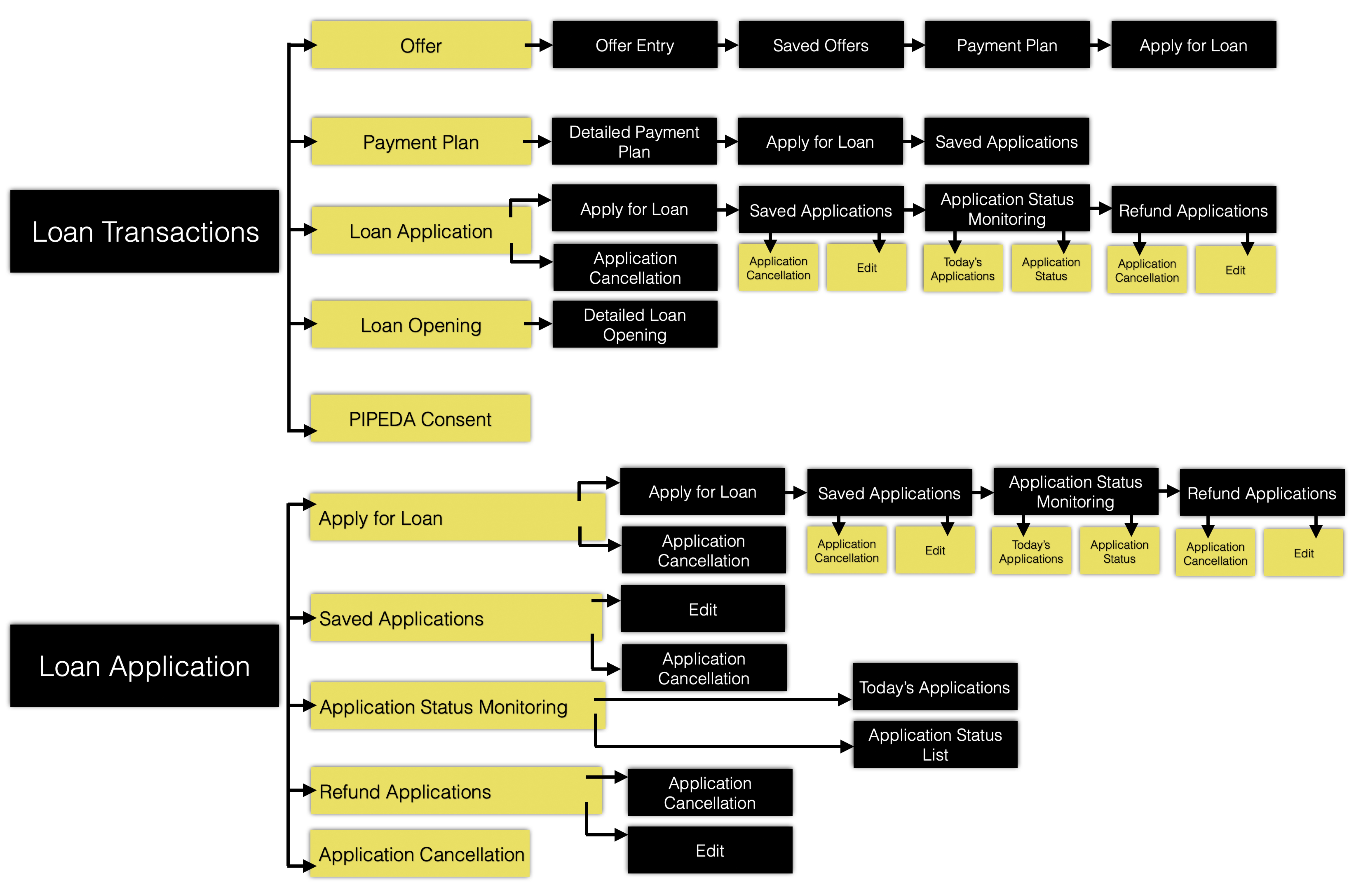Renault & Dacia Group - B2B Project

Project Overview
Topic: Renault & Dacia Loan Management Platform for Dealers
End Date: August 2022
Methods: Heuristic Evaluation, Interview with Stakeholder, User Flow, Wireframes, High-Fidelity Prototype
Deliverables: UI design, User Flow Diagram, Usability test insights, Wireframes, UI Style Guide, High-Fidelity Prototype
Tools: Adobe XD
Working Type: Full-time paid job
Workplace: Digital Agency
Client: Renault & Dacia Group
End User: Renault Dealers, B2B
My roles: UI Designer, UX Designer, Building Information Architecture, UX Researcher, Project Lead
Collaboration: a UX Designer and a developer
Background
Renault operates in 140 dealerships across Turkey. Renault provides a Loan Management platform to all the financing professionals at its dealerships to apply for and get car loans to drive dealership sales.
Goal
Redesigning the Vehicle Loan Management dealer experience to drive conversion and employee satisfaction
Problem Statement
Renault dealers were not satisfied with the existing Loan Management platform for several reasons. Dealers were experiencing the following user and business pain points:
- Low task completion rates: only 40% of loan applications were successfully completed
- Lengthy Time to Complete Task: successful loan applications took between 30 – 40 minutes
In addition, anecdotal evidence suggested that there were foundational usability issues with:
- Complex information architecture, categorization, and taxonomy
- Excessive navigation
- Lack of visual appeal
Just as critical: Renault Group’s desire to use a single Loan Management platform to its “Dacia” sister brand added to the importance and criticality for simplifying the Loan Management platform prior to scaling it.
Solution
- New design with a better navigation, categorization, and information architecture
- A clear interface using the corporate colors of Renault
- Using UI elements that makes the interface easy to follow like a progress bar
- Better data entry methods such as dropdowns and checkboxes
- Better user flow that prevents backtracks
- New elements for clear guidance with errors
- Real time verification for credit checks and identity verification
Process

Analyzing (conducting research) on the existing experience
Based on my heuristic evaluation and usability testing, I uncovered the following root causes for these user and business problems:
- Error-Prone Forms: Forms that do not provide clear error messages or guidance on how to correct mistakes can lead to user frustration and abandonment of the loan application process.
- Lack of Progress Indicators: Without clear indicators of how far along they are in the process or how much longer it will take, users may become impatient and less likely to complete the application.
- Inadequate Autofill and Data Reuse: Failing to offer autofill options for repeat applicants or the ability to reuse previously submitted information can increase the effort required to complete applications, decreasing completion rates.
- Inefficient Data Entry Processes: Lack of streamlined data entry methods, such as dropdowns, checkboxes, or predictive text, can slow down the application process.
- Overwhelming Amount of Required Information: Requesting too much information upfront without clear explanations of its necessity can overwhelm users, leading to high drop-off rates.
- Slow Load Times: Slow loading pages can significantly increase the time it takes to complete an application, leading to user frustration and potential abandonment.
- Poorly Designed Workflows: An application process that does not follow a logical order or requires users to backtrack to provide additional information can significantly increase completion time.
- Lack of Real-Time Verification: The absence of real-time data verification (for credit checks, identity verification, etc.) can delay the application process while users wait for manual verifications to be completed.
Before | After

User Flow
After conducting research, navigation, and content were categorized with a card sorting method, resulting in the creation of a new user flow, which is expected to be pivotal in the project. The current design’s complexity primarily stemmed from poorly structured information architecture.

Impact
Based on the re-designed Loan Management platform, Renault was able to:
- Increase the task completion rates (by 100%)
- Reduce the time to complete loan applications (by 20 minutes)
- Increase dealer satisfaction ratings (by 100%)
In turn, these significantly improved user experience and business outcomes results in Renault rolling out the Loan Management platform to its more than 150 Dacia sister brand dealerships confidently.
UI Style Guide
UI style guide is inspired by the Renault’s corporate/brand colors and components. This made the platform look more professional.